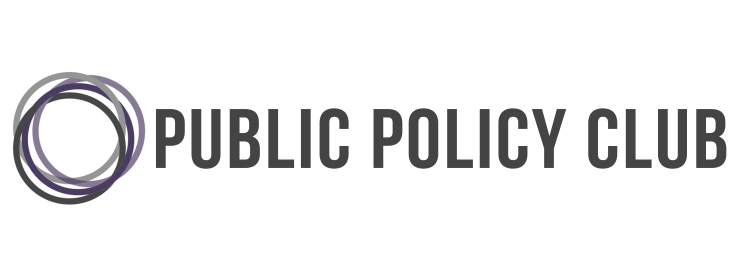By Lewis Mugonyi
Introduction
On the 9th of July 2023, New Zealand and the European Union signed a lucrative Free Trade Agreement (FTA) in Brussels, marking a significant milestone in Aotearoa’s international trade relations. The agreement has been in negotiation for several years with the aim of bolstering the economic ties of both parties, enhancing market access, and fostering closer cooperation between New Zealand and the 27 EU member states. Both sides have completed the necessary international and domestic procedures and requirements that saw it materialise on the 1st of May 2024 (NZTE, 2024).
Reasons For the New Zealand-EU Free Trade Agreement
In conception, this agreement bears a myriad of ambitious goals for all the parties involved. The most significant goals are analysed below.
One of the primary motivations for embarking on this trade endeavour with the European Union is to promote economic growth and development through market access and opening venues for newer markets (Bounds, 2022). The European Union has a population of over 450 million people, which illustrates a significant market for New Zealand’s exports; approximately, NZ exports to the EU will increase by $1.8 billion annually. (Mcclay, 2024). By eliminating tariffs and barriers to trade, New Zealand can increase its export volumes, particularly in the agricultural sector, through cheese, milk, and beef. The two-way trade of goods and services is estimated at $20.2 billion. (Service, 2024).
Secondly, closer economic ties with the European Union would facilitate the transfer and sharing of innovation and technology. Particularly for New Zealand businesses, exposure to state-of-the-art European technologies and techniques can be advantageous in fields like manufacturing, renewable energy, and biotechnology. Initiatives for joint research and development have the potential to bolster New Zealand’s innovation even further.
In addition, the FTA will support compliance with sustainable practices. Since both parties to this agreement emphasise practices that conserve the environment, the FTA is expected to include provisions that promulgate sustainable agriculture, encourage the adoption of green technologies, and minimise carbon footprints. Consequently, the FTA will act as an example of environmental sustainability to the wider global community, bettering New Zealand’s reputation as a manufacturer and producer of eco-friendly goods (Trade, 2024).
The FTA is projected to enhance diplomatic relations, creating benefits that extend beyond the economy. It will also serve as a platform to form and strengthen bilateral diplomatic relations between New Zealand and the EU. This will then increase the likelihood of collaborating and forming partnerships in areas such as research and development, sports and recreational activities, education, healthcare, human rights initiatives, and tourism and hospitality.
Moreover, the FTA has the potential to foster the harmonisation of legal standards or judicial cooperation, which will facilitate smoother resolution of cross-border disputes and grievances. In the event of cyber threats or transnational crime, this agreement will enable the sharing of insights and diffusion of ideas on how to combat such crime.
Another relevant benefit of the Free-Trade Agreement is its ability to strengthen governance principles. This FTA will be poised to encourage the transfer of good governance strategies, including transparency, accountability, efficiency, and anti-corruption measures.
Finally, the agreement is likely to promote consumer benefits. Due to the FTA, New Zealand and EU consumers will have a great variety of choices. They will benefit from a broader range of goods and services at competitive prices. This could mean imports of high-quality goods that enhance consumer choices, hence driving competition in the domestic markets. A relevant example is access to European luxury products and services that can serve a niche market in New Zealand (Mcclay, 2024).
Reasons Against the New Zealand-EU Free Trade Agreement
Although this Free Trade Agreement promises a lot of positive change, it is imperative to recognise that there is no light without darkness, and the agreement also has its shortcomings. These shortcomings are examined below.
To begin with, the trade agreement could cause a loss of political autonomy. Joining an FTA often comes at the cost of compromising national sovereignty on certain decisions that may affect the working relationship of the agreement. Critics fear this FTA could limit or undermine New Zealand’s ability to implement independent policies in specific areas, such as labour standards or environmental protection (Alvarez, 2015).
The trade agreement may also inhibit infant industries. Analysts argue that the agreement could negatively affect domestic industries in Aotearoa, especially those that may struggle to compete with advanced European imports. Sectors, including manufacturing and services, might face increased competition, and the consequences may be job losses and, ultimately, business closures.
Furthermore, The Free Trade Agreement raises agricultural concerns. While Free Trade Agreements offer endless opportunities for New Zealand’s agricultural sector, there are concerns about impending impacts on local farmers. Increased competition from European farming goods and products could pressure New Zealand farmers to lower prices or adopt unsustainable or unfeasible practices.
Finally, the FTA requires strict regulatory and alignment standards. The Free Trade Agreement may require New Zealand to align itself with European Union standards and regulations that may be complex and ultimately stringent. This alignment may impose additional costs for New Zealand businesses, specifically small and medium-sized enterprises that lack the resources to adapt effectively.
Conclusion
The New Zealand-EU Free Trade Agreement conveys both possibilities and challenges. While it comes equipped with the potency and promises of economic development, consumer benefits, and technological transfer, it also raises alerts and concerns about infant industry impacts and political sovereignty. Policymakers ought to carefully balance these factors to ascertain that the FTA delivers on its promises of tangible benefits for New Zealand while simultaneously safeguarding national interests. As the agreement progresses, its success will rely on its ability to create a sustainable, fair, and mutually beneficial trade partnership between New Zealand and the European Union.
References
Alvarez, L. F. (2015, July 6). Free Trade Agreements and Sovereignty. Retrieved from Premaculture Research Institute : https://www.permaculturenews.org/2015/07/06/free-trade-agreements-and-sovereignty/
Bounds, A. (2022, July 1). EU and New Zealand agreed on a free trade deal. Retrieved from Financial Times: https://www.ft.com/content/362c648b-d465-4cae-ba18-5ae48f84ef51
Mcclay, H. T. (2024, March 19). Government moves to quickly ratify the NZ-EU FTA. Retrieved from Beehive Government NZ: https://www.beehive.govt.nz/release/government-moves-quickly-ratify-nz-eu-fta
Mcclay, H. T. (2024, March 25). NZ-EU FTA gains Royal Assent for 1 May entry to force. Retrieved from Beehive Government NZ: https://www.beehive.govt.nz/release/nz-eu-fta-gains-royal-assent-1-may-entry-force
NZTE. (2024, May 1). Key points from New Zealand’s free trade agreement with the EU . Retrieved from New Zealand Trade & Enterprise: https://my.nzte.govt.nz/article/eu-nz-fta-negotiations-concluded
Service, N. Z. (2024, April 30). New Zealand-European Union Free Trade Agreement. Retrieved from New Zealand Government: https://www.customs.govt.nz/business/tariffs/free-trade-agreements/new-zealand-european-union-free-trade-agreement/
Trade, M. o. (2024, May 1). NZ-EU FTA – National Interest Analysis . Retrieved from New Zealand Ministry of Foreign Affairs and Trade: https://www.bing.com/ck/a?!&&p=0e6bf9f5967f56b4JmltdHM9MTcxNjU5NTIwMCZpZ3VpZD0xM2IwY2ExZS1kYjNmLTY4ZGYtMDlmNC1kOGQ5ZGE2NTY5NDAmaW5zaWQ9NTIzNQ&ptn=3&ver=2&hsh=3&fclid=13b0ca1e-db3f-68df-09f4-d8d9da656940&psq=NZ+EU+FTA+risks&u=a1aHR0cHM6Ly93d3cubWZhdC5nb3Z




